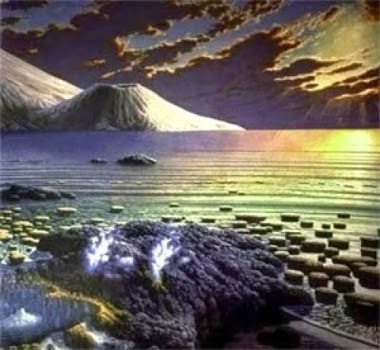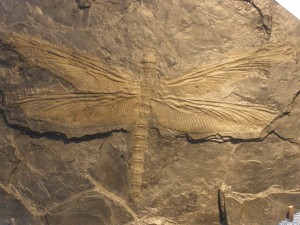July 19, 2014 – Some of you who know me personally know that in my formative years I started studying geophysics in university before a physical accident laid me up for more than a year and I in an epiphany changed my major to Islamic Studies and Medieval History. So I was both a science and history nerd all at the same time. Well nothing has changed. I continue to study both fields with as much enthusiasm as I did then. The only difference now is no one is grading me on the results of my research.
Recently there have been two studies of Earth’s early atmosphere. One study uses evidence from rock samples collected deep in the ground in South Africa and suggests an early oxygenation event occurring around 3 billion years ago. Another records a second spike in atmospheric oxygen dating to 2.3 billion years ago.
Now we normally think of oxygen as a byproduct of single-cell plant life emerging in Earth’s primordial past. But what would explain a sudden influx of oxygen, a 1,000-fold increase in fact, followed by a precipitous drop 2.3 billion years ago. And what would explain the earlier spike?
In the 2.3 billion year-old atmosphere the deep-ocean sediment cores indicate an atmosphere containing 40% oxygen, more than twice today’s atmosphere (20.95%). And in the period following a drop off in oxygen levels to as low as 0.1%. So much for our steady-state, slow growth models of atmospheric evolution based on our notions that primitive biology created the oxygen we breathe.
So where could the oxygen have come from? Would a sudden out-gassing event from prolonged vulcanism explain it? Would oxidation of surface rocks suddenly release a large amount of oxygen into the atmosphere? Could our early oceans have contributed significant amounts of water to the atmosphere causing weathering rainfall to release oxygen from eroding continental land masses?
The scientists who studied the 3 billion year old oxygen event believe that primitive bacteria were responsible for the free oxygen build up. But they ascribe to the linear notion that correlates our existence today to the oxygen that began then and has continued to build to today’s close to 21%. We know from the 2.3 billion year-old spike, and from further evidence in the geological record that oxygen levels have fluctuated dramatically over time. For example in the Carboniferous and Permian oxygen levels exceeded 35% and this has been associated with the emergence of giantism in the insect fossil record (see below the image of a dragonfly fossil as big as a seagull). At the end of the Permian the Earth witnessed its greatest mass extinction with oxygen levels dropping to as low as 15%. And declining even further around 200 million years ago to 12% (equivalent to living in an atmosphere today at 2,750 meters (9,000 feet) above sea level).
So oxygen events at 3 billion and 2.3 billion years ago aren’t unique to Earth’s history. But we can rule out volcanism as a source. Volcanoes may produce compounds in which oxygen resides (water vapour, carbon dioxide, amd sulphur dioxide) but no free oxygen. So more than likely oxidation on a massive scale is the contributing source to these geologically historic oxygenation episodes.
What about an off planet source for these sudden oxygenation events? Could a water-rich asteroid in collision with Earth have led to an influx of oxygen? Could this have happened twice in Earth’s early history? Many Earth scientists believe that the source of our oceans comes from comets and icy asteroids that collided with our planet in its early history. So why not oxygen as well? No doubt if comets and icy asteroids were striking the Earth they were bringing water to the planet and, therefore, oxygen. After all water is composed of hydrogen and oxygen. As a reactive gas, however, that early oxygen might have been briefly free before bonding with iron and other elements found on the Earth’s emerging continental surfaces. Some of that oxygen may have migrated into the early stratosphere to begin forming the ultraviolet radiation shield that made it possible for life to evolve.
The geological record does show us that life began to emerge on Earth as early as 3.5 billion years ago. But our old ideas about the emergence of oxygen in lock step with life no longer holds water. Early oxygenation events at 3 and 2.3 billion years ago may have no biological correlation whatsoever.


















